Stroke Symptoms Patients Stroke란 Treatment Medical nursing
Surgery Radiofrequency Ablation cardiovascular
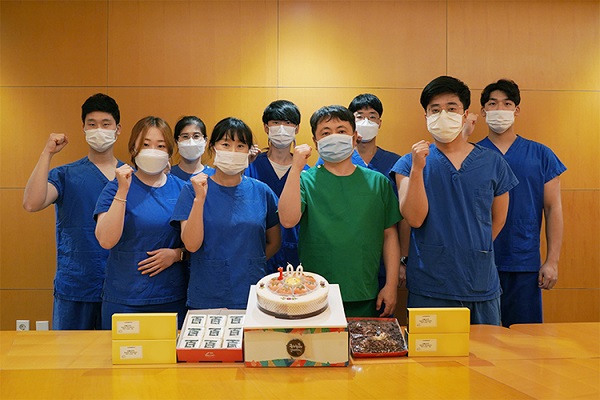
"It's the Heart and Arrhythmia Center, the Stroke Center, and the Artificial Joint Center."
When I asked what the most notable centers at Yusung Sun Hospital were after a tour of the hospital, Medical Director Sun Seung-hoon immediately replied that he seemed to have a lot to say about the center, so I told him to let it all out.
■Heart and Arrhythmia Center: Focus on Strengthening Capabilities, Strength in Arrhythmia Treatment
The heart and arrhythmia center was especially crowded with patients waiting for their turn in the morning, when outpatients are the most numerous.
Nursing Director Young-im Kim said, "Our hospital has the most arrhythmia patients. It is a disease that requires continuous treatment, but we have been ahead in terms of treatment capabilities from early on. I think it's because patients who have experienced this trust us and come to see us."
Medical Director Seung-hoon Sun, who was listening to this from the side, said that the "selection and concentration" strategy worked. "Cardiovascular disease is an emergency disease that requires immediate attention. I thought it was not right for patients to travel long distances to go to the only general hospital in the region. That's why I focused on expanding the infrastructure for cardiovascular diseases from the start."
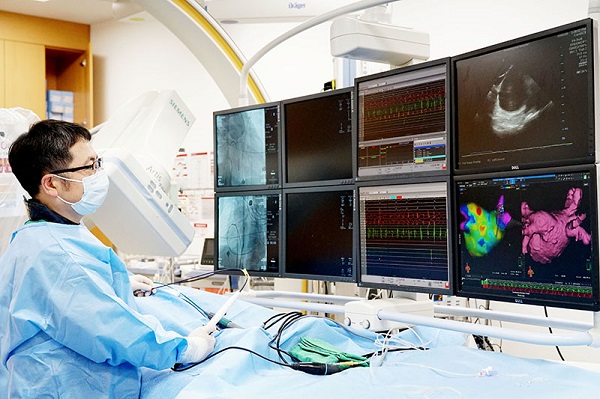
A talented dream team has also significantly impacted the center's growth. In particular, Min-seok Choi, the center director, is a leading authority in arrhythmia treatment with the most experience in radiofrequency ablation in the central region (over 2,300 cases). He was the first in Korea to implement "zero-radiation" radiofrequency ablation without the use of radiation.
In addition, Yusung Sun Hospital was the first in Korea to introduce the advanced atrial fibrillation treatment device "Leadmia (navigation medical-grade stereo-stabilizer)" in 2020. It took only seven months to surpass 100 radiofrequency ablations after the introduction. Leadmia is a device that detects electrical signals from the atrium before radiofrequency ablation, maps the cause area in 3D high-definition images, and shows it like a contour. It is a navigation that guides you to your destination.
In addition, in-house nurses who have completed the 3D support course support. Leadmia is performed while looking at the 3D output image, so a 3D support staff who can handle the device is required in addition to the surgeon. In other hospitals, this staff is not a medical professional, so communication is difficult. However, at Yusung Sun Hospital, in-house nurses who have received training participate in the procedure, making smooth communication possible.
Min-seok Choi, the center director, said, "The fact that doctors and nurses work together to strive for better results is a great difference between Yusung Seon Hospital's Heart and Arrhythmia Center." "We will continue to do our part to restore a healthy life to many patients with arrhythmia," he said firmly.
■Stroke Center: Integrated care from the emergency room
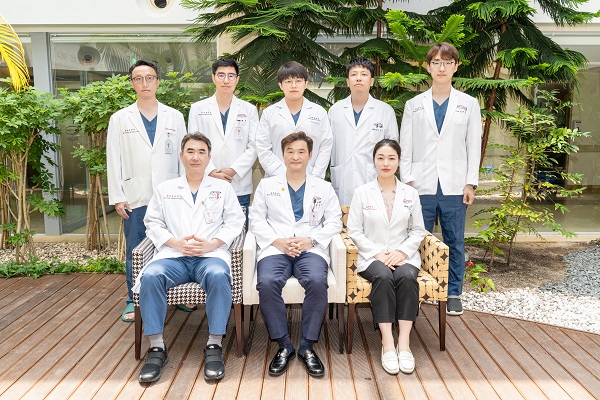
The Stroke Center also has a dream team that is just as good as the Heart and Arrhythmia Center. They have established a collaborative system that combines departments such as neurosurgery, neurology, and rehabilitation medicine to provide personalized treatment for cerebrovascular diseases. In particular, they are at the hospital 24 hours a day, 365 days a year, and directly treat patients from the emergency room. This is because cerebrovascular diseases are life-threatening if not diagnosed and treated quickly by experts.
In particular, the establishment of this system was mainly due to the efforts of Hospital Director Ho-sung Han. He had always thought that it would be better if patients received treatment from multiple departments at the same time as soon as they arrived in the emergency room during his days as a resident in neurology. He introduced an emergency protocol system based on his experience in the United States and established an integrated stroke center where multiple departments collaborated to provide medical care.
Hospital Director Ho-sung Han said, "I feel a heavy sense of responsibility not only as a hospital director but also as someone who must fulfill my duty to treat emergency stroke patients in the region. I will do my best to ensure that our center continues to play a necessary role in the region."
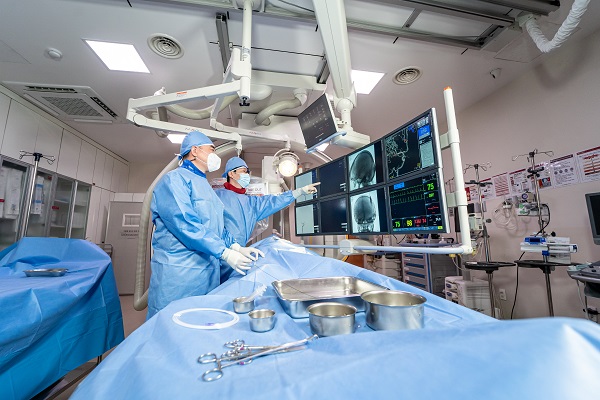
Meanwhile, the Stroke Center has continuously improved its treatment capabilities through external evaluations, such as acquiring the revascularization treatment stroke center certification from the Korean Stroke Society and the designation of the cerebral vascular surgery accreditation institution from the Korean Society of Neurovascular Intervention.
Center Director Seong-rae Cho said, "Stroke treatment is essential within the golden hour, but management after that is also critical. We will continue to make many efforts to strengthen the collaborative system and improve the quality of medical services so that patients can trust and visit us."
■Artificial Joint Center: Safe Surgery to Post-Care
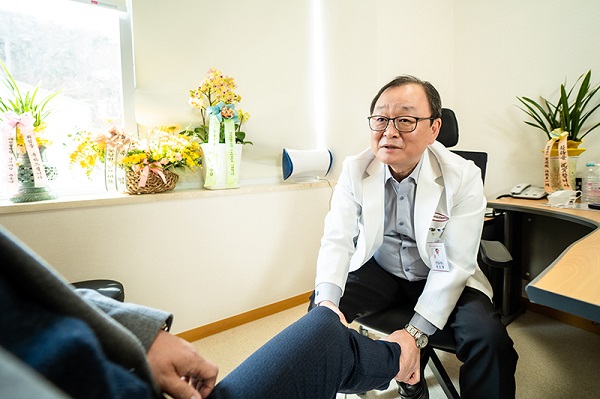
Rapid population aging is leading to a sharp increase in patients with osteoarthritis. Of course, not all patients need surgery, but patients with advanced osteoarthritis with worn-out cartilage need surgery to replace it with an artificial joint.
At this point, you might think of looking for a hospital in Seoul that does surgery well, but residents of the central region knock on the door of the Yusung Seon Hospital Artificial Joint Center instead. This is because they can receive not only fast and safe surgery but also meticulous post-care.
In particular, the Yusung Sun Hospital Artificial Joint Center has strengthened its expertise by adding Dr. Soon-hang Kwon, a leading authority in knee artificial joint surgery in the central region.
He has already built a strong reputation in the Chungnam region, where many patients have joint diseases. He has performed over 12,000 artificial joint surgeries since 2005 at Gongju Hospital, and he is particularly treating elderly patients safely with navigation artificial joint surgery. This surgery uses a satellite navigation system with an infrared camera to register patient information on a computer. Then, it proceeds with the surgery following the path guided by the computer.
Dr. Kwon explained, "The size, alignment, and ligament balance of the artificial joint can be accurately matched, so the success rate of the surgery is high, and the life of the artificial joint can be improved. It can also reduce the risk of fatal complications such as pulmonary embolism that can occur in conventional surgical methods, making it safer for elderly patients."
The center also has another hidden driving force. It is the company Corentec, led by Medical Director Seung-hoon Seon. Corentec, founded in 2000, has pioneered the localization of artificial joints by developing artificial hip and knee joints in Korea for the first time. Its subsidiary, Instec, is a leader in metal 3D printing, and this technology is actively used to develop artificial joints. The artificial joint center actively exchanges with the two companies and works tirelessly to provide better medical services to patients.
The post-surgery artificial joint care service is also worth noting. In addition to providing instructions on precautions after surgery, for patients who need more careful care, a physical therapist will visit the patient's home directly to check the condition of the knee.
Medical Director Seung-hoon Sun said, "Patients with cardiovascular and joint diseases will become more numerous. As we have taken patient experience as our most important management philosophy, we will also make meticulous efforts to strengthen medical services for elderly patients."


